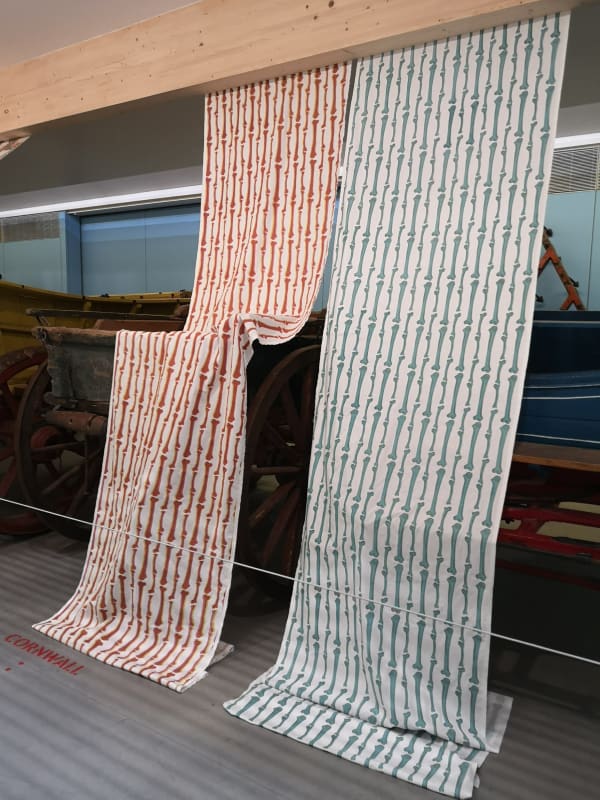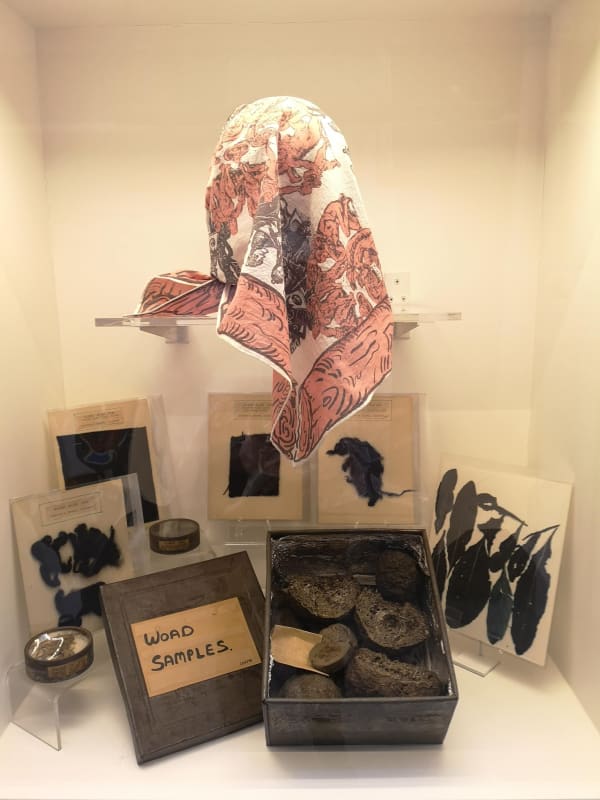-
-
“My practice expands painting by addressing its materiality and circulation through the relationship between painting and the figure of the peasant.”
Sigrid Holmwood’s work focuses on the ways in which the hand-making of materials generates meaning and resists the alienation of industrialised life. She hand-makes her own pigments and dyes made from traditionally grown and foraged plants and organic materials and her images portray peasant figures and pastoral scenes; not as an idealized or passive subjects to please a western or bourgeois sensibility but as images produced in the context of the “peasant painter”. Holmwood is particularly interested in the ‘open air museum’ and traditional heritage industries as a manifestation of an increasing interest in the crafts of everyday life – specifically those belonging a rural past – as a response to the alienation of industrial and post-industrial society. Holmwood rejects the notion in Western and European painting traditions that separates nature from culture. She herself, has adopted a persona of ‘The Peasant-Painter’, constructed through the framework of her membership of a historical interpretation society who regularly perform at open air museums.
Recent works under the title ‘Cannibal and Witch Eat the Rich’ include paintings, printed calicos, a peasant costume and other printed textiles. Paints and materials used in these works include hand-made pigments and dyes using historical methods and which follow the colonial paths of the plants used. For example, brazilwood (a tree which produces a red dye, and which gave the country of Brazil its name), was traded widely in the 16th century in Europe. In the process, the tree was decimated leaving it endangered to this day and the Tupi Amerindians were exploited and often depicted by Europeans as savage cannibals.
Meanwhile, on the witch, Holmwood writes, “Western colonialism and capitalism with its extractive approach to plants as ‘natural resources’ served to suppress alternative ways of relating with plant-beings both within Europe and outside Europe. As Silvia Federici has argued in her book Caliban and the Witch, the Great Witch Hunts in particular were a counter-revolutionary tool that served to supress radical movements from the peasant class, and appropriate women’s reproductive capacities by silencing their medicinal knowledge of plants. This tactic was then exported to the Americas to suppress indigenous knowledge through accusations of satanism and idolatry.”
‘Eat the rich’ is an abbreviation of a saying attributed to Jean-Jacques Rousseau (1712–1778), often used in popular culture in reference to opposing wealth inequality and associated with socialism. Holmwood is concerned with the construction of the ‘other’ in order to construct ‘modernity’ and the Western structuring of the in-this-case-Cannibal Peasant as a necessary ‘other’ in order to maintain the ‘bourgeois.’ This recent work furthers that, imagining an alternative history with an alliance between the cannibal and the witch to eat the rich.
Works in this series formed part of the final exam for Holmwood's practice-based PhD in Art, Goldsmiths College, University of London. (Thesis title: “The Peasant Paints: Expanding Painting Decolonially with Planting and Pigment-making”).
See Sigrid Holmwood's work in person at our gallery in Hockney, Holmwood, Nash until 26th March 2022.
-
Recent Works
-
Further works
-
The Museum of English Life, Reading
The Commons: Re-Enchanting The World. Until January 30th 2022.The Museum of English Rural Life WebsiteThe commons defines the natural capital that we all share: land, air, and water. Six artists, including Sigrid Holmwood, with responses to the commons have made installations for the museum’s galleries. Holmwood shows recent printed Calico lengths amongst the museum's rural farming equipment.
"Printed calicos from India (kattuner in Swedish) using plant dyes and mordants on cotton fabric were a particularly popular colonial commodity in Europe from the 17th century, until many countries introduced import bans to support local industries during the 18th century. These European calico printers appropriated the Indian techniques, and used plant dyes from around the globe such as indigo from grown with enslaved labour in the Americas, and later India, under the plantation system; and brazilwood and logwood from the rainforests of Central and South America. These patterned calicos formed an integral part of Swedish regional costumes in the form of headscarves, aprons, and linings for bodices – thereby demonstrating that the figure of the peasant that has been used to construct ideas of nationhood in Scandinavia, was in fact implicated in global colonial forces." Sigrid Holmwood
-
Celcius Projects, Malmo
February 2021Celcius Projects WebsiteIn February 2021, Celsius Projects Malmo presented Holmwood's exhibition Cannibal and Witch Eat the Rich, which is part of the final exam for Holmwood's practice-based PhD in Art, Goldsmiths College, University of London. (Thesis title: “The Peasant Paints: Expanding Painting Decolonially with Planting and Pigment-making”). The exhibition displayed paintings and printed calicos using dyes and pigments from plants that follow colonial and cannibalistic trajectories.
Photo credit: Lena Bergendahl
-
Sigrid Holmwood was born in 1978 and studied at the Ruskin School of Drawing & Fine Art, Oxford and the Royal College of Art and Goldsmiths Colleges, London. In 2003 she was awarded the Sainsbury Scholarship in Painting and Drawing at the British School in Rome. Holmood’s works have been shown widely in the UK in solo exhibitions and also Italy, Sweden, Spain and China. Annely Juda Fine Art has held three major shows: “The Peasants Are Revolting” in 2017, “Journey to WuMu- Paper Paintings” (with Duan Jianyu) in 2012 and “1857 Paintings” in 2008. She has featured in many group and curated exhibitions including ‘Creating the Countryside’ at Compton Verney in Warwickshire in 2007 and in 2011 ‘Polemically Small” at Torrance Art Museum, Los Angeles USA & The Saatchi Gallery in Adelaide; British Art Now, Gallery of South Australia, Adelaide. She has been the recipient of numerous awards, scholarships and residences.
See Sigrid Holmwood's work in person at our gallery in Hockney, Holmwood, Nash until 26th March 2022.
Sigrid Holmwood: Cannibal and Witch Eat the Rich
Past viewing_room























